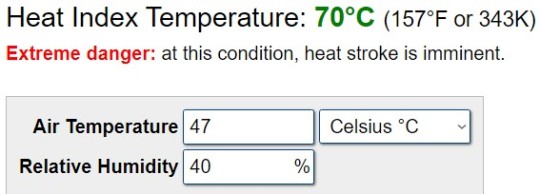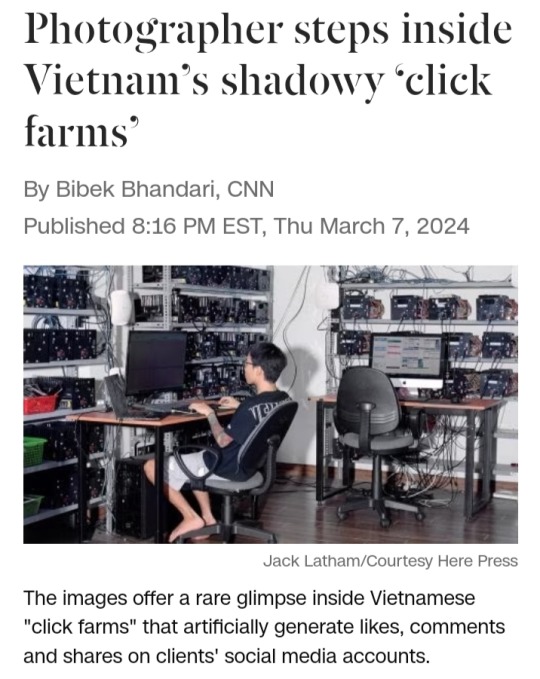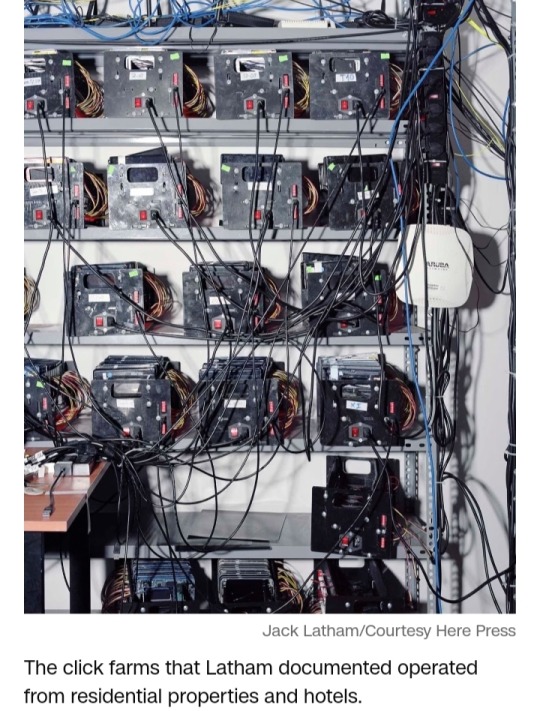#philippines china relation
Text
Philippines America Army Drill, rain of missiles, combat helicopters... America and Philippines practiced attack on China, direct message to Dragon - philippines and America simulate mock invasions in largest ever war games message to China
Manila: The armies of America and Philippines are currently conducting joint exercises. Soldiers of both the countries launched Javelin missiles and practiced with howitzers, giving a strong message to China. With this aggressive exercise off the coast of the South China Sea, the Philippines demonstrated how it can thwart a maritime attack. The live fire exercise was conducted off the shores of…

View On WordPress
#America#america aid to the philippines#army#attack#China#china philippines relation#combat#Direct#Dragon#Drill#games#helicopters#invasions#largest#Message#missiles#mock#philippines#philippines america army drill#philippines america china war#philippines america maneuver#philippines america relation#philippines china relation#philippines meessage to china#practiced#Rain#simulate#war
1 note
·
View note
Quote
His social media campaign has proved so successful there are fears this will now be the model for future elections in the Philippines, with the mainstream media sidelined, and a blizzard of fact-free narratives competing online. His family's return to power also neatly bookends the optimistic age of globalisation. This arguably began when the US refused to support his autocratic father in the waning years of the Cold War, inspiring pro-democracy movements across the world. It has now come to an end with the war in Ukraine, the breakdown of China-US relations, and the rise of populist leaders riding a tsunami of social media disinformation.
Jonathan Head, ‘What the Marcos' return to power means for the Philippines’, BBC
#BBC#Jonathan Head#social media campaign#Philippines#mainstream media#globalisation#United States#Cold War#Ferdinand Marcos#China-US relations#2022 Russian invasion of Ukraine#pro-democracy movements#populism#social media disinformation
5 notes
·
View notes
Text
youtube
#youtube#militarytraining#Balikatan 24#International Cooperation#Military Cooperation#Pacific Partnership#Troop Deployment#Philippines#US-Philippines Relations#War Games#Military Deployment#Joint Exercise#Training#Camp#Security#Military Base#US Marines#Defense#Military Training#Amphibious Assault#Military Camp#Military Exercise#south china sea#at camp aguinaldo#Usmc
0 notes
Text

Red Lines: The 🇵🇭 #Philippines says it won't let 🇨🇳 #China remove a #Filipino #military outpost on a disputed shoal.
#SouthChinaSea #WestPhilippineSea #ScarboroughShoal #BajoDeMasinloc #diplomacy
#geopolitics #internationalaffairs #InternationalRelations
https://www.yahoo.com/news/philippines-wont-allow-china-remove-125213190.html
#Philippines#China#Scarborough Shoal#southeast asia#Diplomacy#international relations#International affairs#foreign affairs
1 note
·
View note
Text
A Group composed of a former Supreme Court Chief Justice, former Philippine Coast Guard (PCG) Admiral, Professors, Lawyers and Doctorate Degree Holders recently submitted a Position Paper on the West Philippine Sea (WPS) wherein they concluded that there are no effective Legal Mechanisms available under International Law to resolve the Disputes such as the WPS, and that Neutrality and Conflict Prevention are the most Sensible Choices for the Philippines
#philippines#west philippine sea wps#philippine coast guard pcg#china#international law and relations society of the philippines isip
0 notes
Text
Climate change-driven heatwaves threaten millions

Extreme record-breaking heat leads to severe crises across the world.
Already in 2024, from Israel, Palestine, Lebanon, and Syria in the West; to Myanmar, Thailand, Vietnam, China, and the Philippines in the East; large regions of Asia are experiencing temperatures well above 40°C (104°F) for days on end.
The heatwave has been particularly difficult for people living in refugee camps and informal housing, as well as for unhoused people and outdoor workers.
Using the Heat Index Calculator, at that temperature and a relative humidity of 50%, residents see a heat index of 55°C (131°F) - a temperature level humans cannot long survive:

In February, the southern coastal zone of West Africa also experienced abnormal early-season heat. A combination of high temperatures and humid air resulted in average heat index values of about 50°C (122°F) - the danger level, associated with a high risk of heat cramps and heat exhaustion.
Locally, temperatures entered the extreme danger level associated with high risk of heat stroke, with values up to 60°C (140°F):

Even here at Ad Astra's HQ in Kansas, last summer we saw several days with high temperatures of 102°F (39°C) at 57% humidity, resulting in a heat index of 133°F (56°C):

Of course, the major difference in survivability in Kansas versus some of the places suffering extreme heat right now is that air-conditioning abounds here. Those who live somewhere that faces extreme heat but can escape it indoors are a lot more likely to survive, but a person who lives somewhere without such life-saving gear faces not just discomfort, but heat stroke and even death.
This includes unhoused and poor people here in the wealthier parts of the world, who often do not have access to indoor refuge from the heat.
About 15% of US residents live below the poverty line. Many low-wage earners work outside in construction or landscaping, exposed to the ravages of heat. Many do not own an air conditioner, and those who do might need to budget their body's recovery from heat against cost to purchase and run cooling equipment. Because heat stress is cumulative, when they go to work the next day, they’re more likely to suffer from heat illness.
Bad as that is, for those living on the street, heatwaves are merciless killers. Around the country, heat contributes to some 1,500 deaths annually, and advocates estimate about half of those people are homeless. In general, unhoused people are 200 times more likely to die from heat-related causes than sheltered individuals.
For example, in 2022, a record 425 people died from heat in the greater Phoenix metro area. Of the 320 deaths for which the victim’s living situation is known, more than half (178) were homeless. In 2023, Texans experienced the hottest summer since 2011, with an average temperature of 85.3°F (30°C) degrees between June and the end of August. Some cities in Texas experienced more than 40 days of 100°F (38°C) or higher weather. This extreme heat led to 334 heat-related deaths, the highest number in Texas history and twice as many as in 2011.
The Pacific Northwest of Canada and the USA suffered an extreme heat event in June, 2021, during which 619 people died. Many locations broke all-time temperature records by more than 5°C, with a new record-high temperature of 49.6°C (121°F). This is a region ill-suited to such weather, and despite having relatively high wealth compared to much of the world, many homes and businesses there do not have air-conditioning due to a history of much lower temperatures.
Heatwaves are arguably the deadliest type of extreme weather event because of their wide impact. While heatwave death tolls are often underreported, hundreds of deaths from the February heatwave were reported in the affected countries, including Bangladesh, India, Thailand, Myanmar, Cambodia, and the Philippines.
Extreme heat also has a powerful impact on agriculture, causing crop damage and reduced yields. It also impacts education, with holidays having to be extended and schools closing, affecting millions of students - in Delhi, India, schools shut early this week for summer when temperatures soared to 47°C (117°F) at dangerous humidity levels:

At 70°C (157°F !), humans simply cannot function and face imminent death, especially when humidity is high. This is the notion of "heat index," a derivative of "wet-bulb temperature."
Though now mostly calculated using heat and humidity readings, wet-bulb temperature was originally measured by putting a wet cloth over a thermometer and exposing it to the air.
This allowed it to measure how quickly the water evaporated off the cloth, representing sweat evaporating off skin.
The theorized human survival limit has long been 35°C (95°F) wet-bulb temperature, based on 35°C dry heat at 100% humidity - or 46°C (115°F) at 50% humidity. To test this limit, researchers at Pennsylvania State University measured the core temperatures of young, healthy people inside a heat chamber.
They found that participants reached their "critical environmental limit" - when their body could not stop the core temperature from continuing to rise – at 30.6°C wet bulb temperature, well below what was previously theorized. That web-bulb temperature parallels a 47°C (117°F) heat index.
The team estimates that it takes between 5-7 hours before such conditions reach "really, really dangerous core temperatures."
youtube
On March 5, 2024, Hong Kong saw temperatures of 27°C (80°F) with 100% humidity, which results in a heat index of 32.2°C (90°F) - seemingly not so bad until considering it's higher than the critical wet-bulb temperature. Also, if you watch the video, imagine the long-term effects of water accumulating in residences, such as dangerous mold.
We are witnessing the effects of climate change right now, all around the world, and rising temperatures are just the most-obvious (what we used to call "global warming"). Many, many other side-effects of climate change are beginning to plague us or headed our way soon, and will affect us all.
Unfortunately, those most affected - and those being hit the hardest right now - are people most vulnerable to heatwaves. With climate crises increasing in both intensity and frequency, and poverty at dangerous levels, we face a rapidly rising, worldwide crisis.
We must recognize the climate crisis as an international emergency and treat it as such. So much time, creative energy, resources, and life is wasted in war and the pursuit of profit or power - consider how much good could come from re-allocating those resources to ensuring a future for Earthlings, instead.
(Expect to see a "Science into Fiction" workshop on climate change coming soon - SF writers have a particular responsibility to address such important topics.)
#climate crisis#climate change#global warming#heatwaves#poverty and homelessness#climate emergency#in response to asks for a post on this topic#stay tuned for posts on other crises arising from climate change
75 notes
·
View notes
Text
Quad Vs Squad India: Australia US & Japan Forming New Quad With Philippines India Concerns
manila: America, Australia and Japan together seem to be forming a new Quad with the Philippines. In the past weeks, it has come to light that America, Japan and Australia have created a Quad 2.0-like framework against China by bringing together their forces under the growing Indo-Pacific along with the Philippines. This has been done especially keeping in mind the South China Sea. India is…

View On WordPress
#AUSTRALIA#australia america japan philippines#china india relation#China India Relations#concerns#forming#india#japan#new quad#philippines#philippines china ussue#Philippines China USU#philippines india#Quad#Squad
1 note
·
View note
Text
Condemn and resist US-led warmongering in Asia-Pacific! Support the Filipino people’s struggle for national liberation and democracy!
Robert Reid | Chairperson FFPS
The Friends of the Filipino People in Struggle (FFPS) condemns Marcos Jr. for surrendering Philippine sovereignty and putting the Filipino people in serious danger. We strongly oppose the continued US military build-up on Philippine soil as part of its war provocations against China, threatening to engulf the entire region into war.
The ongoing Balikatan US war exercises in the Philippines involves 16,000 troops 11,000 of which are US soldiers, making it the biggest joint military drills to date.
The exercises are part of the US government’s first island chain strategy, which aims to encircle China by creating a fortified chain of US-controlled islands. Part of the exercises will take place on the strategic Batanes islands and Palawan. The Batanes islands being close to Taiwan, allows control over the strategic Bashi Channel. Palawan on the other hand borders the contested West Philippine Sea. From these strategic islands, the US is testing its new Typhon mid-range missile systems that have the capacity to hit China.
With such military build-up in the first island chain, the US aims to provoke China into striking first, giving the US an excuse to go to war with its imperialist rival.
US military build-up in the region only brings suffering to the Filipino people. The current Balikatan exercises and the presence of US troops in communities are disrupting the people’s livelihoods, who cannot access their crops, coasts and seas due to increased militarization. In combination with widespread landlessness and a vicious cycle of debt through feudal relations of production, which are aggravated by the current drought El Niño, and the unwillingness of the Marcos Jr. to address the root causes of their hardships, this pushes the majority of the Filipino people into increasingly desperate situations.
Furthermore, communities are traumatised due to the constant bombardment of low flying jets, aerial bombing campaigns and artillery shelling as part of the war drills. All this suffering however would pale in comparison to the catastrophe that would befall the Filipino people in the event of a full-pledged inter-imperialist war.
One of the biggest obstacles preventing a US-China war in the region is the revolutionary movement in the Philippines. The revolutionary struggle that has roused and mobilized millions of Filipinos in clear opposition to US imperialist oppression and exploitation, and to the despotic ruling landed and comprador bourgeoisie classes, has forced the Philippine puppet government to deploy most of the US-directed AFP forces on ‘internal defence’ instead of ‘external defence’.
The Filipino people’s resistance to foreign domination is a thorn in the eye of the US and its strategic interests, who have ordered Marcos Jr. to finish off the entire revolutionary movement before the end of the year. However, this is already the umpteenth extension of their deadline to the Government of the Philippines (GRP), as Marcos Jr. and his counterrevolutionary forces have failed to follow through on the previous deadline to end the revolutionary movement, just like all his predecessors including his dictator father Marcos Sr.
Since the US-directed “counterinsurgency” does not try to address the root causes that push the Filipino people to fight for national and social liberation, it can only fail in ending their armed struggle. It has only resulted in a fully-fledged war against the Filipino people. There have been increases in militarizations of rural communities and other violations of International Humanitarian Law, such as increased number of abductions, killings and bombings, to try and squash the revolutionary movement and all dissent through the most vicious means.
As FFPS we vehemently stand with the Filipino people as they resist the fascist onslaught of the US-directed Marcos Jr. regime and fully support the demand of the Filipino people to dismantle US military bases in the Philippines and end US imperialist aggression and warmongering in the region. We stand with the Philippine revolutionary movement in advancing the national democratic revolution, recognizing that the Filipino people’s revolutionary war for national liberation and democracy is a concrete and essential contribution by the Filipino people to fighting imperialist war in the region.
End US aggression in the Philippines!
Stop the bombings in the Philippines!
Militant action against US imperialist war-mongering!
We support the Filipino aspiration: National Liberation against US imperialism!
Support the advance of the Filipino people’s war for national liberation and democracy!
85 notes
·
View notes
Text
For @radiosandribbons especially but here's a list of recs for books by guys in/about/related to The Pacific
The Pacific by Hugh Ambrose, the maps piss me off but it's not a bad read. It can be a bit shallow at times in its coverage of events, it jumps around a fair amount, and it very much reads like a first book but it does have some interesting details.
With the Old Breed by Eugene Sledge, absolutely fantastic read. Highly highly recommend. I personally couldn't put it down for more than 5 minutes at a time and read it in a day.
China Marine by Eugene Sledge, originally meant to be the second half of WtOB when it was going to be called Band of Brothers
Helmet for my Pillow by Robert Leckie, Leckie wrote a great number of books and I can't speak to those but this one is Very Leckie and quite interesting. He called everyone by a nickname to avoid using real names and I assume that's because he wrote it so soon after the war and didn't want anyone complaining about his bitching. Also thank you Vera for all you did to make this book possible 🫡
Islands of the Damned by R.V. Burgin is a great book. Burgie writes very well, his style is straight forward and light hearted often.
Voices of the Pacific by Adam Makos is a bit different, but it's got stories and interviews with a lot of different guys from later in their lives including Sid Phillips. It's got some interesting stuff and while it perspective hops a fair amount it's in a way that makes it easy to read in increments rather than feeling annoying.
We Band of Angels by Elizabeth M. Norman is quite different from the others on this list as it's about the nurses in the Philippines and a bit about the Baton Death March but it's a fascinating read and I can't recommend it enough.
Sid Phillips wrote one called You'll be Sor-ree! That I haven't read, but he mentions in Voices of the Pacific he left a lot of things out of this because he didn't want his kids/grandkids knowing those things and told some of that there instead when he was older.
Chuck Tatum also wrote Red Blood, Black Sand: Fighting Alongside John Basilone from Boot Camp to Iwo Jima and I haven't read that either but his parts in Voices of the Pacific were interesting so I'd assume this is too
44 notes
·
View notes
Text
In the waters of the South China Sea, Chinese coast guard vessels have clashed with Philippine ships. In the air above the Taiwan Strait, Chinese warplanes have challenged Taiwanese jet fighters. And in the valleys of the Himalayas, Chinese troops have fought Indian soldiers.
Across several frontiers, China has been using its armed forces to dispute territory not internationally recognized as part of China but nevertheless claimed by the Chinese Communist Party (CCP).
In August 2023, Beijing laid out its current territorial claims for the world to see. The new edition of the standard map of China includes lands that are today a part of India and Russia, along with island territories such as Taiwan and comprehensive stretches of the East and South China Seas that are also claimed by Brunei, Indonesia, Japan, Malaysia, the Philippines, and Vietnam.
China often invokes historical narratives to justify these claims. Beijing, for example, has said that the Japanese-administered Senkaku Islands, which it claims under the name of the Diaoyu Islands, “have been an inherent territory of China since ancient times.” Chinese officials have used the same words to back China’s right to parts of the northeastern Indian state of Arunachal Pradesh. The Chinese government also claims that its sovereignty over the South China Sea is based on its own historic maritime maps.
However, in certain periods since ancient times China has also held sway over other states in the region—Mongolia, North Korea, South Korea, and Vietnam. Yet Beijing is currently not laying claim to any of these.
Instead, Beijing has embraced a selective irredentism, wielding specific chapters of China’s historical record when they suit existing aims and leaving former Chinese territories be when they don’t. Over time, as Beijing’s interests and power relations have shifted, some of these claims have faded from importance, while new ones have taken their place. Yet for Taiwan, Chinese claims remain unchanged, as the fate of the island state is tied to the very legitimacy of the CCP as well as the vitality of Chinese President Xi Jinping’s political vision.
Many of the CCP’s territorial claims have roots in the 19th and 20th centuries during the late rule of the Qing Dynasty. Following diplomatic pressure and repeated military defeats, the Qing Dynasty was forced to cede territory to several Western colonial powers, as well as the Russian and Japanese empires. These concessions are part of what are known in China as the “unequal treaties,” while the 100 years in which the treaties were signed and enforced are known as the “century of humiliation.” These territorial losses eventually passed from the dynasty to the Republic of China and then, following the Chinese Civil War, to the CCP. As a result, upon the CCP’s establishment of the People’s Republic of China in 1949, the new Chinese state inherited outstanding territorial disputes with most of its neighbors.
But despite the humiliation the Qing Dynasty’s losses had caused, the CCP proved willing to compromise and reduce its territorial aims during times of high internal unrest. Following the Tibetan uprising in 1959, for instance, the CCP negotiated territorial settlements with countries bordering the Tibet region, including Myanmar, Nepal, and India. Similarly, when unrest rocked the Uyghur region in the 1960s and ‘90s, Beijing pursued territorial compromises with several bordering countries such as Afghanistan, Kazakhstan, Kyrgyzstan, and Tajikistan. In the aftermath of the Great Leap Forward in the early 1960s and the 1989 Tiananmen Square Massacre, the CCP also pursued territorial settlements with Mongolia, Laos, and Vietnam in the hopes of securing China’s borders during times of domestic instability. Instead of pursuing diversionary wars, the CCP relied on diplomacy to settle border and territory disputes.
But China has changed quite a lot since then. In recent years, the CCP has avoided the inflammatory domestic political chaos of previous decades, and its once-tentative hold over border regions, such as Tibet and the Uyghur region, has been replaced by an iron grip. With this upper hand, the CCP has little incentive to pursue peaceful resolutions to remaining territorial disputes.
“China’s national power has increased significantly, reducing the benefits of compromise and enabling China to drive a much harder bargain,” said M. Taylor Fravel, a political science professor at the Massachusetts Institute of Technology.
In this context, the CCP has expanded its irredentist ambitions. After the discovery of potential oil reserves around the Senkaku Islands, and the United States’ return of the islands to Japan in the 1970s, Beijing drew on its historical record to lay claim to the islands, even though it had previously referred to them as part of the Japanese Ryukyu Islands. Similarly, though Beijing and Moscow settled a dispute over Heixiazi Island, located along China’s northeastern border, in 2004, the 2023 map of China depicted the entire island (ceded, along with vast Pacific territories, by the Qing Dynasty to the Russian Empire in 1860) as part of its domain, much to the ire of the Russian Foreign Ministry.
Collin Koh Swee Lean, a senior fellow with the S. Rajaratnam School of International Studies at the Nanyang Technological University in Singapore, argues that the Chinese mapping of Heixiazi Island shows that Beijing holds on to certain core interests and simply waits for the opportune time to assert them.
“Given the current context of the war in Ukraine and Russia’s increased dependence on China, it might have appeared to Beijing that it has the chips in its pockets because, after all, Moscow needs Beijing more than the other way around,” Koh said on the German Marshall Fund’s China Global podcast.
This raises the question of whether territorial disputes that were settled during times of CCP weakness can be revisited and become subject to irredentist ambitions should power balances shift in China’s favor.
According to Steve Tsang, the director of the China Institute at the University of London’s School of Oriental and African Studies, there is currently a limit to how far the CCP will push territorial claims against Russia, since President Xi will need Russian support to sustain his grand ambitions for Chinese leadership on the global stage.
Although it would be a long shot, even Russia may not be safe from these ambitions indefinitely. Given that large swaths of Russia’s Pacific territories were part of China until 1860, “China could claim back the Russian Far East when it deems the time is right,” Tsang said. Such control would grant Beijing unrestricted access to the region’s abundance of coal, timber, tin, and gold while moving it geographically closer to its ambition of becoming an Arctic power.
While there is plenty of historical evidence pointing to former Chinese control over the southeastern portion of the Russian Far East, the historical record is less unequivocal about Chinese control over Taiwan. Anything resembling mainland Chinese control over Taiwan was not established until after 1684 by the Qing Dynasty, and even then central authority remained weak. In 1895, the Qing Dynasty ceded Taiwan to the Empire of Japan following the First Sino-Japanese War, and by the time Chinese authority was restored in 1945, Taiwan had undergone several decades of Japanization.
These details have not prevented the CCP from claiming that Taiwan has been an inalienable part of China since ancient times. Yet more than any other irredentist claim, Xi has made unification with Taiwan a major component of his vision to rejuvenate the Chinese nation.
Unification, however, has little to do with ancient history and more to do with the challenge that Taiwan presently poses to Xi’s aims, according to Chong Ja Ian, an associate professor who teaches about Chinese foreign policy at the National University of Singapore.
“The CCP pursues a Chinese nationalism that emphasizes unity and homogeneity centered around the CCP leadership while they also often claim that their single-party rule is acceptable to Chinese people,” Chong said.
In contrast, Taiwan holds free elections in which multiple political parties compete for the favor of a people that have increasingly developed an identity distinct from mainland China.
“The Taiwanese experience is a clear affront to the CCP narrative,” Chong said.
Control over Taiwan is also attractive to Beijing because it is key to unlocking the Chinese leadership’s broader ambition of maritime hegemony in waters where almost half of the world’s container fleet passed through in 2022.
As with the case of Taiwan, the CCP’s historical arguments regarding its claims on island groups and islets in the East and South China Seas are likewise much weaker than many of its land-based claims.
Instead, Chinese territorial intransigence in the maritime arena is more about a strategic shift in the value of the seas around China, Fravel said.
Today, it has been estimated that more than 21 percent of global trade passes through the South China Sea. And beneath these waters are not only subsea cables that carry sensitive internet data but also vast estimated reserves of oil and natural gas.
Although it may say otherwise, Beijing’s unwillingness to let up on its tenuous territorial maritime claims suggests that China is pursuing long-held ambitions and global aspirations rather than attempting to reverse past losses. So long as the CCP wields its historical record selectively and changeably to serve its aims—and is willing to back its claims up with military action—China’s neighbors will remain at risk.
20 notes
·
View notes
Text

Floating barrier at the disputed #ScarboroughShoal / #BajoDeMasinloc in the #SouthChinaSea / #WestPhilippineSea was ‘necessary’, 🇨🇳 #China's foreign ministry says to ‘safeguard sovereignty.’
🇵🇭 #Philippines' coastguard had also accused Chinese authorities of ‘blocking’ a gov't ship in the area. | via South China Morning Post
#geopolitics #diplomacy #foreignaffairs #foreignrelations #internationalaffairs #internationalrelations
https://www.scmp.com/news/china/diplomacy/article/3253276/chinese-floating-barrier-south-china-sea-flashpoint-was-necessary-beijing-says
#Philippines#china#south china sea#West Philippine Sea#Scarborough Shoal#Bajo de Masinloc#diplomacy#foreign affairs#foreign relations#international relations#international affairs#disputed islands#hotspot
1 note
·
View note
Text
“Defending our Territory” DAW, and yet absolutely refusing to say anything about SABAH? ‘Pinapunta pa nga niya ang Prime Minister ng Malaysia dito sa Pilipinas, tapos ang TAHIMIK niya’ (He even invited the Malaysian Prime Minister (PM) of Malaysia to visit the Philippines, and he was very QUIET about Sabah the entire time of the Minister’s visit)
It seems that the orders of the United States (US) is the Philippines to FIGHT China, but not Malaysia over Sabah, or Taiwan over Itu Aba, and that is what Weakling Junior seems to be doing right now, being a good Doggie …
#china#philippines#united states us#malaysia#sabah#anwar ibrahim#taiwan#itu aba#public relations pr#trust ratings#approval ratings#gross domestic product gdp#bong bong marcos bbm
1 note
·
View note
Note
💎 for the headcanons!!

LOOPiN NEVER HAPPENED! DEBUT IF YOU CAN!




TREASURE's J.J.
I don't remember how fresh this information is because I don't know if I've mentioned it enough and in detail in this blog, but Jiahang was actually an YG trainee from age 14 to 16. He spend most of that time under KPlus, their model division, learning absolutely nothing because he's really hard to teach anything music related, God bless his heart. He got transferred last minute to active trainee because his millionaire dad paid the Hell out of everyone in charge to get him into the possible lineup for the at the time rumored YG Treasure Box. As a response to that, this man got BULLIED TO SHREDS by EVERYONE AROUND, and I'm talking SOUTH KOREAN ACCURATE BULLYING. Like, there's a reason why when he joined Boy Of The Week, a whole year after quitting YG, mind you!, that he had the shortest hair he ever had in his life and was desperate to not stand out.
But! Let's imagine a world in which he endured all that or some sort of interference happened so things didn't escalate to the point they had. If he never quitted YG, he would be put on Treasure Box, receive the most majestic and appealing cut in the history of reality television, and make it at the 11th to 13th cut, max. Debuting would make him the first chinese Idol under YG Entertainment, and although that would possibly skyrocket his fanbase in mainland China and a lot of SEA countries - specially because he lived in the Philippines! His tagalog is atrocious but hey! - it would also put an immense target on his back over How That Happened, despite the involvement of his father being very minimal in this canon compared to how tangled he had to get with New Wave Music to give Jiahang a spot in LOOPiN.
Really, I don't think he would stay long as a Treasure member by an infinity of reasons, in fact, I see him exiting the group alongside Mashiho and Yedam in late 2022, or maybe even earlier. I think he could make himself into an Idol archetype that worked for him in Treasure, but without anyone putting on the Produce Line pants and actually training him and making him drop the non ambitious act, as happened here, Idol life would get very boring and unfulfilling to Jiahang very fast.
After quitting Treasure, he would definely go back to the mainland, or maybe Taiwan or Hong Kong if he felt more like depending on his dad's influence, and stablish himself there. Do a ton of CFs, act a bit, model a little, regret back to ulzzang mostly, release one song once in a blue moon... And that's that!
ATEEZ's MINWOO.
Oh boy... So, Minwoo was the second ever trainee under KQ Entertainment, arriving at the company right after Hongjoong, and was immediately cut into the debut team. That ended up not lasting because of his constant fights with superiors and trainers, his push to be made the head of a fully self producing group - sounds familiar? Lmao -, as well as the fact that he couldn't get along with the forming trainee team in any way. Like, the Ateez members in LOOPiN canon hate him, just absolutely hate him, and they only had to deal with him for 8 months. Yet they have great reasons for that because MINWOO USED TO SUCK ASS!
That hatred would not digress all that much if he ended up debuting in Ateez, because he would debut extremely unsatisfied. There's also no reality in which he stays in the group longer than 2 years before getting the boot. Minwoo is not an Idol that can function anywhere outside of LOOPiN with all its particularities and the power that he was granted inside New Wave Music, that is like, almost unheard of for a trainee - the one thing I can compare it to, if I'm not mistaken, would be Bang Chan with Stray Kids, kind of, or Kahi with Afterschool, but even they didn't get that producer-ish status until they were already a) under the company for ages or b) already debuted and successful.
After being excused from Ateez, I don't think he would go down quietly; he would probably Say Too Much and tarnish his reputation in the process, making coming back in a group or even a soloist very hard, close to impossible, I would even say. That wouldn't discourage him from making music, and he would stay in the industry as a music producer, and maybe find career redemption there. And he would be extremely unhappy in a lifetime like that, by the way! Forever bitter his Idol dream didn't work! When I say Minwoo without LOOPiN would have turned out a miserable person, I mean it.
OOO's HANJAE.
Enough with the failures! Let's talk something that would work! Before being added to LOOPiN next minute to fill in Dongwook getting the chop, Hanjae was already under BBC and he was training with the guys that ended up becoming OnlyOneOf. If he hadn't made it as a replacement, he would get integrated into the lineup with ease, and get transferred to 8D with everyone and eventually debut in OOO.
I honestly think there's a lot of room for success for Hanjae in this version of canon, and much like will happen to him in LOOPiN eventually duo to both group's acting heavy concept - a concept that I find it so hard for Hanjae to execute without combusting, but I digress! - I see him getting a Rowoon/Eunwoo sort of deal and reaching popular actor status, as he's always intended to reach, and excel at it. Maybe because of OOO's nuguness, if you will, it would take him longer to get the sort of roles he's gotten up until now, but that would not frustrate Hanjae. He's definely someone that can be happy with moderate success, and that wouldn't fully succumb to the actor disease and ever leave the group - which might limited him more, too... But he isn't in it for glory and recognition, and honestly? That's a good mentality to have.
The only big loss I see in this version is his producing talents going by undiscovered, but he can live without them.
CRAVITY's HAEGON.
Okay, hear me out, I always had a clear vision of Cravity's Haegon. Just picture this: Kim Haegon, who spent most of his formative years as a Pledis trainee up until his favorite hyung Beomseok was dismissed from the company for 'being too old', which Haegon didn't take well back when he was 16, given their growing codependent sibling-ish deal. Now, if Beomseok had been firmer with him at that point in time and abandoned him for good - LIKE HE ALWAYS WANTED TO DO, ANYWAYS! BUT ANYWAYS! - instead of going along with his plan to hunt a place for them to debut and landing in Boy Of The Week, everything would be so different for him.
Would Haegon go apeshit then? Yes. In the same way he's gone apeshit at 22 when Beomseok left the group without discussing it with him? No. It would be so much healthier for them to have gone their separate ways when Haegon was still a teenager. Like, his way of getting 'revenge' at Beomseok would be to get into his former company, Starship Entertainment - the one that really fucked him up - and grind his way to debut there no matter what, literally, no matter what, because he still had a bigger goal. LOOPiN Haegon in 2022 had all his dreams 'fulfilled', in his perspective, and had nothing else to focus his energy on except for the fact that Beomseok was missing - and that Gyujin was taking his place.
A lot of things would happen to him as consequence of him going to Starship, like A LOT, too many to get into here, but most of them would be good development things. I also think his bound with the Cravity members would be way less chaotic than with LOOPiN, that was fucked by Beomseok being his ultimate priority - unless Cravity has members creating vicious circles of codependency between each other and I'm not familiar with that!
Anyways, he would SHINE in Cravity after debut, but I honestly think a Haegon that got separated from Beomseok much earlier and had responsible enough people around him would shine anywhere. Suck that's not his canon, though! It actually really sucks that's not who he is or will ever be, now! It hurts me! It really does!
AND THE OTHERS...?
Without LOOPiN on their way, Taesong, Seungsoo, Haruki, Dylan, O.z and Gyujin would all end up as regular citizens, or at the very least non Idol celebrities! But that would be a whole other post...
#&& ⠀ [ . . . ] hound on a hunt ⠀⸻ q&a .#&& ⠀ [ . . . ] hound on a hunt ⠀⸻ extras .#fictional idol community#fake kpop group#kpop au#kpop fanfic#kpop oc#I could expand on this but I did the ask game to get headcanons and alternative ideas out of my mind!
22 notes
·
View notes
Text
Since the U.S. approved the potential sale of 12 F-16 fighter jets to the Philippines in 2021, Manila has been contending with the question of how to finance the costly purchase.
"It's still too expensive, so we have to find a way to be able to finance it in the long term. We want to change our [economic] growth," Jose Manuel Romualdez, Philippine ambassador to the U.S., told Nikkei Asia in an interview this month.[...]
When the sale was announced in June 2021, the U.S. estimated the cost of the aircraft and related equipment at $2.43 billion, more than half of the Philippines' annual defense budget. The aircraft are intended to check China's air and maritime operations in the South China Sea.[...]
"[Philippine President Ferdinand Marcos Jr.] has moved fast to solidify ties with the United States, and the Biden administration needs to respond just as quickly to seize a great opportunity for rejuvenating a vital alliance. The Asia-Pacific has long been short-changed on the FMF."
The FMF, a military assistance account managed by the State Department, provides grants or loan assistance to foreign governments for the purchase of U.S. defense equipment and military training.
While the U.S. recently added Taiwan to the FMF recipient list, the majority of the fund is devoted to the Middle East next year. President Joe Biden's administration intended to allocate nearly 90% of the FMF fund to the Middle East, including Israel, in its presidential budget request for fiscal 2024.
27 Dec 23
27 notes
·
View notes
Text
By Vijay Prashad
During Balikatan, the defense ministers of the four main nations met in Honolulu, Hawaii to discuss the political implications of these military exercises off the coast of China. Australia’s Richard Marles, Japan’s Kihara Minoru, the Philippines’ Gilberto Teodoro, and the United States’ Lloyd Austin met for their second meeting to discuss their collaboration in the region that they call the Indo-Pacific. It was at the edges of this meeting that the public relations teams of these ministers began to float the term “Squad” to refer to these four countries. While they did not formally announce the creation of a new bloc in East Asia, this new nickname intends to provide a de facto announcement of its existence.
#China#New Cold War#imperialism#pivot to Asia#antiwar#Philippines#war games#Balikatan#Japan#Australia#Struggle La Lucha
14 notes
·
View notes
Text

(CNN) — Jack Latham was on a mission to photograph farms in Vietnam — not the country’s sprawling plantations or rice terraces but its “click farms.”
Last year, the British photographer spent a month in the capital Hanoi documenting some of the shadowy enterprises that help clients artificially boost online traffic and social media engagement in the hope of manipulating algorithms and user perceptions.
The resulting images, which feature in his new book “Beggar’s Honey,” provide rare insight into the workshops that hire low-paid workers to cultivate likes, comments and shares for businesses and individuals globally.
“When most people are on social media, they want nothing but attention — they’re begging for it,” Latham said in a phone interview, explaining his book’s title.
“With social media, our attention is a product for advertisers and marketers.”

In the 2000s, the growing popularity of social media sites — including Facebook and Twitter, now called X — created a new market for well-curated digital profiles, with companies and brands vying to maximize visibility and influence.
Though it is unclear when click farms began proliferating, tech experts warned about “virtual gang masters” operating them from low-income countries as early as 2007.
In the following decades, click farms exploded in number — particularly in Asia, where they can be found across India, Bangladesh, Indonesia, the Philippines, and beyond.
Regulations have often failed to keep pace: While some countries, like China, have attempted to crack down on operations (the China Advertising Association banned the use of click farms for commercial gain in 2020), they continue to flourish around the continent, especially in places where low labor and electricity costs make it affordable to power hundreds of devices simultaneously.
‘Like Silicon Valley startups’
Latham’s project took him to five click farms in Vietnam.
(The click farmers he hoped to photograph in Hong Kong “got cold feet,” he said, and pandemic-related travel restrictions dashed his plans to document the practice in mainland China).
On the outskirts of Hanoi, Latham visited workshops operating from residential properties and hotels.
Some had a traditional setup with hundreds of manually operated phones, while others used a newer, compact method called “box farming” — a phrase used by the click farmers Latham visited — where several phones, without screens and batteries, are wired together and linked to a computer interface.

Latham said one of the click farms he visited was a family-run business, though the others appeared more like a tech companies.
Most workers were in their 20s and 30s, he added.
“They all looked like Silicon Valley startups,” he said. “There was a tremendous amount of hardware … whole walls of phones.”
Some of Latham’s photos depict — albeit anonymously — workers tasked with harvesting clicks.
In one image, a man is seen stationed amid a sea of gadgets in what appears to be a lonely and monotonous task.
“It only takes one person to control large amounts of phones,” Latham said. “One person can very quickly (do the work of) 10,000. It’s both solitary and crowded.”
At the farms Lathan visited, individuals were usually in charge of a particular social media platforms.
For instance, one “farmer” would be responsible for mass posting and commenting on Facebook accounts, or setting up YouTube platforms where they post and watch videos on loop.
The photographer added that TikTok is now the most popular platform at the click farms he visited.

The click farmers Latham spoke to mostly advertised their services online for less than one cent per click, view or interaction.
And despite the fraudulent nature of their tasks, they seemed to treat it like just another job, the photographer said.
‘There was an understanding they were just providing a service,” he added. “There wasn’t a shadiness. What they’re offering is shortcuts.”
Deceptive perception
Across its 134 pages, “Beggar’s Honey” includes a collection of abstract photographs — some seductive, others contemplative — depicting videos that appeared on Latham’s TikTok feed.
He included them in the book to represent the kind of content he saw being boosted by click farms.
But many of his photos focus on the hardware used to manipulate social media —webs of wires, phones and computers.
“A lot of my work is about conspiracies,” Latham said. ” Trying to ‘document the machines used to spread disinformation’ is the tagline of the project. The bigger picture is often the thing we don’t see.”

Click farms around the world are also used to amplify political messages and spread disinformation during elections.
In 2016, Cambodia’s then-prime minister Hun Sen was accused of buying Facebook friends and likes, which according to the BBC he denied, while shadowy operations in North Macedonia were found to have spread pro-Donald Trump posts and articles during that year’s US presidential election.
While researching, Latham said he found that algorithms — a topic of his previous book, “Latent Bloom” — often recommended videos that he said got increasingly “extreme” with each click.
“If you only digest a diet of that, it’s a matter of time you become diabetically conspiratorial,” he said.
“The spreading of disinformation is the worst thing. It happens in your pocket, not newspapers, and it’s terrifying that it’s tailored to your kind of neurosis.”
Hoping to raise awareness of the phenomenon and its dangers, Latham is planning to exhibit his own home version of a click farm — a small box with several phones attached to a computer interface — at the 2024 Images Vevey Festival in Switzerland.
He bought the gadget in Vietnam for the equivalent of about $1,000 and has occasionally experimented with it on his social media accounts.
On Instagram, Latham’s photos usually attract anywhere from a few dozen to couple hundred likes.
But when he deployed his personal click farm to announce his latest book, the post generated more than 6,600 likes.
The photographer wants people to realize that there’s more to what they see on social media — and that metrics aren’t a measurement of authenticity.
“When people are better equipped with knowledge of how things work, they can make more informed decisions,” he said.

“Beggar’s Honey,” co-published by Here Press and Images Vevey, is available now.
#Jack Latham#click farms#box farms#Hanoi#Vietnam#Beggar’s Honey#box farming#social media#algorithms#user perception#trolls#PR#marketing#advertising#likes#comments#shares#digital profiles#virtual gang masters#bots#spam#China Advertising Association#click farmers#mass post#disinformation#misinformation#fake news#metrics
11 notes
·
View notes